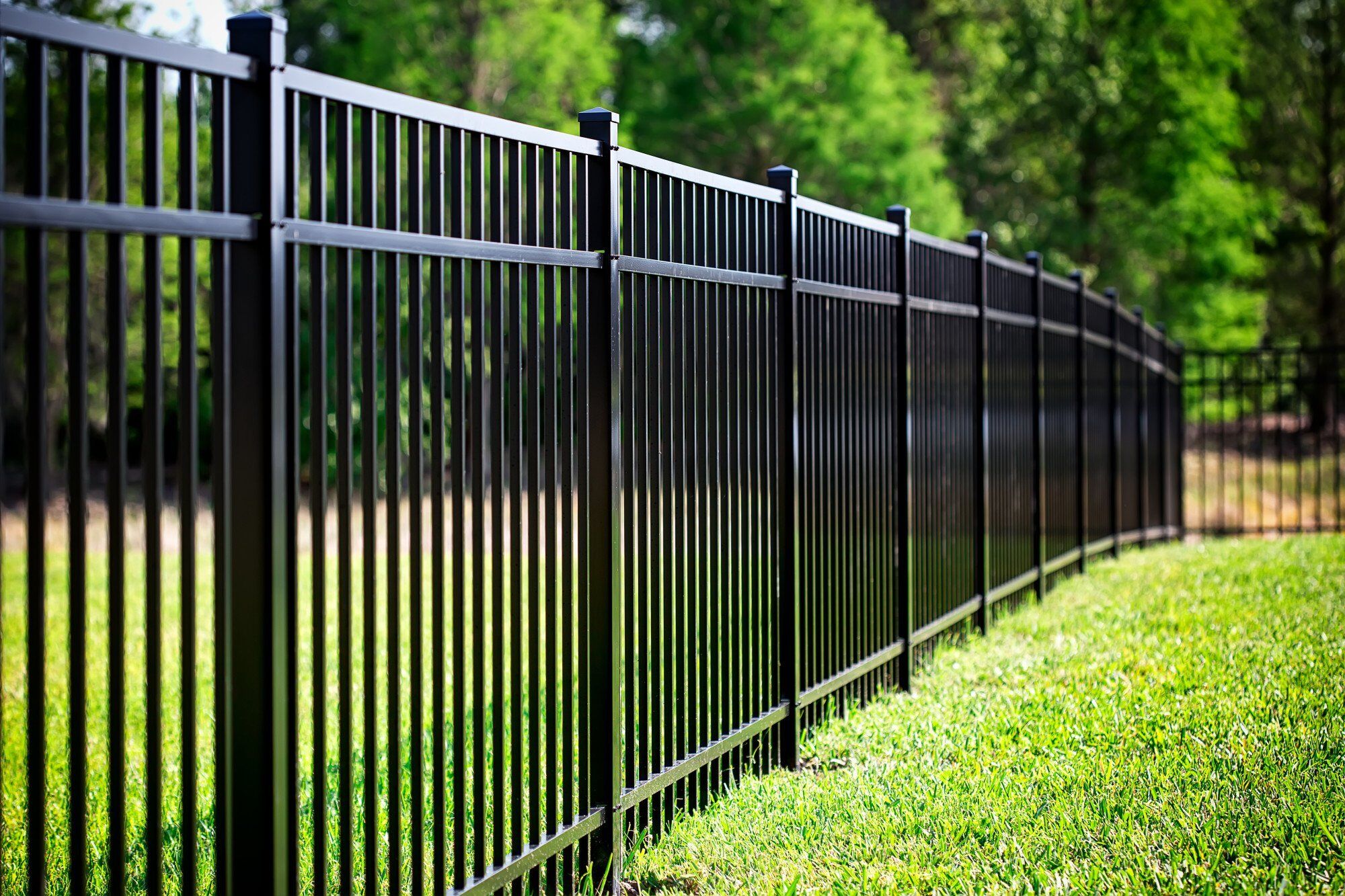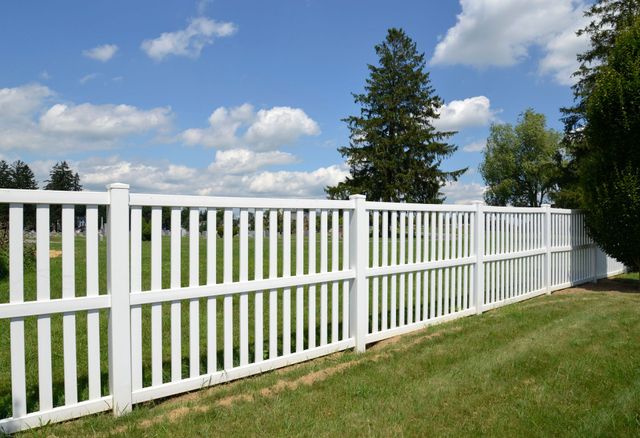All Categories
Featured
Your fence is exposed to different weather condition problems year-round, and while it offers as a vital part of your residential property, it's additionally one of the most prone elements when it comes to weather-related damage. Below are some effective techniques to safeguard your fence from weather-related damage.
Wood Fencings: While timber is a traditional option for secure fencing, it is at risk to rot, bug, and warping damages, specifically in areas with high wetness. Pressure-treated timber or cedar is a lot more durable, but routine maintenance is necessary to keep it in excellent problem. Plastic Fencing: Vinyl is an excellent option for those looking for a weather-resistant and low-maintenance fence. It's unsusceptible wetness, won't warp or split in the warmth, and resists fading from UV rays. Metal Fencing: Wrought iron and aluminum are sturdy products for fence, however they need a rust-resistant covering to secure them from corrosion because of moisture. A safety layer or routine maintenance can stop rust and extend the life of steel fences. Compound Secure Fencing: Made from a blend of timber fibers and plastic, composite fencings are highly resistant to weather aspects, consisting of moisture, warm, and UV rays. This material supplies an equilibrium of toughness and visual appeal. Choosing a product fit to your environment will provide much better protection for your fence the long term.
Seal or Discolor the Timber: Applying a top quality sealer or tarnish to your timber fencing develops a water-proof obstacle that protects against moisture from going into the wood. It additionally assists protect the timber from UV rays, which can cause staining and drying out. Reapply Sealant On a regular basis: With time, the safety obstacle of your sealer or tarnish can use down. Relying on your climate, it's a good idea to reapply each to 2 years to maintain the wood secured. This treatment will certainly preserve the fencing's appearance, protect against rot, and prolong its life expectancy.
![]()
For extra defense, take into consideration making use of wind-resistant mesh screens or panels in areas where wind is a considerable concern. This additional layer can assist reduce the pressure that the wind applies on your fence.
Check Water Drainage: Guarantee that the ground around your fencing inclines away from the messages. Correct water drainage enables water to move far from the fence, protecting against wetness build-up. Mount Water Drainage Systems: In areas where drain is a concern, take into consideration adding a French drainpipe or gravel around the base of your fencing blog posts to redirect water far from the structure. Great water drainage can stop rot, corrosion, and other kinds of weather-related damage.
![]()
![]()
Concrete Footings: Set fencing messages in concrete to avoid them from loosening up gradually because of soil erosion or moving ground. Metal Dental Braces: Including metal dental braces to fence posts can offer extra strength and reduce the danger of leaning or breaking. Strengthening your messages ensures that your fencing will stay in area, also throughout extreme climate.
For wood fences, carefully clean the surface with a mild detergent to get rid of dirt and grime. For vinyl fences, use a soft towel and cleansing remedy to avoid accumulation. For steel fencings, inspect for rust and sand it off before using a fresh coat of paint. Final thought. Your fence is a crucial feature of your residential or commercial property, and with the appropriate treatment, it can stand up to the obstacles positioned by the climate. By picking resilient products, doing normal upkeep, and reinforcing weak factors, you can protect your fence from the elements and expand its life. Routine evaluations, applying safety layers, and taking steps to regulate wetness and wind exposure will certainly help ensure that your fence continues to be strong, practical, and appealing for several years ahead.
- Select Weather-Resistant Materials. The products you select for your fence can have a major influence on its capability to endure the elements. Various products are better equipped to manage specific climate condition. Here's a breakdown of how different products hold up against the weather condition:
Wood Fencings: While timber is a traditional option for secure fencing, it is at risk to rot, bug, and warping damages, specifically in areas with high wetness. Pressure-treated timber or cedar is a lot more durable, but routine maintenance is necessary to keep it in excellent problem. Plastic Fencing: Vinyl is an excellent option for those looking for a weather-resistant and low-maintenance fence. It's unsusceptible wetness, won't warp or split in the warmth, and resists fading from UV rays. Metal Fencing: Wrought iron and aluminum are sturdy products for fence, however they need a rust-resistant covering to secure them from corrosion because of moisture. A safety layer or routine maintenance can stop rust and extend the life of steel fences. Compound Secure Fencing: Made from a blend of timber fibers and plastic, composite fencings are highly resistant to weather aspects, consisting of moisture, warm, and UV rays. This material supplies an equilibrium of toughness and visual appeal. Choosing a product fit to your environment will provide much better protection for your fence the long term.
- On A Regular Basis Deal With Wooden Fences. Shielding it from sunlight, wetness, and temperature level fluctuations is critical if you have a wooden fence. Wood can absorb wetness from snow, rain, or moisture, triggering it to rot and degrade. Here's exactly how you can safeguard wood fencings:
Seal or Discolor the Timber: Applying a top quality sealer or tarnish to your timber fencing develops a water-proof obstacle that protects against moisture from going into the wood. It additionally assists protect the timber from UV rays, which can cause staining and drying out. Reapply Sealant On a regular basis: With time, the safety obstacle of your sealer or tarnish can use down. Relying on your climate, it's a good idea to reapply each to 2 years to maintain the wood secured. This treatment will certainly preserve the fencing's appearance, protect against rot, and prolong its life expectancy.

- Mount Windbreaks. Solid winds can create significant damage to fencings, specifically those made of lightweight products or high frameworks. Wind can fall a fence or create panels to change. Setting up a windbreak is an efficient means to decrease the effect of gusty winds. You can create a windbreak by planting shrubs, trees, or tall plants near your fencing. These all-natural barriers can help disperse wind, avoiding direct gusts from harming your fencing.
For extra defense, take into consideration making use of wind-resistant mesh screens or panels in areas where wind is a considerable concern. This additional layer can assist reduce the pressure that the wind applies on your fence.
- Ensure Correct Drain Around Your Fence. Standing water is one of the leading reasons for fence damage, especially for wood fences. Water can weaken the fencing blog posts, causing them to rot and weaken quicker. To stop this:
Check Water Drainage: Guarantee that the ground around your fencing inclines away from the messages. Correct water drainage enables water to move far from the fence, protecting against wetness build-up. Mount Water Drainage Systems: In areas where drain is a concern, take into consideration adding a French drainpipe or gravel around the base of your fencing blog posts to redirect water far from the structure. Great water drainage can stop rot, corrosion, and other kinds of weather-related damage.

- Trim Overhanging Branches and Vines. Looming tree branches and vines can create damage to your fencing during tornados or high winds. To secure your fence, trim any branches or plants that hang over or near the fence frequently.
- Strengthen Fence Posts. The security of your fence mainly relies on the condition of the articles. Fencing articles are prone to changing, leaning, and decaying, specifically throughout durations of extreme weather condition. It's important to reinforce the articles to maintain stability if your fencing is in a location that freezes or experiences high winds during wintertime. Some methods to enhance your fencing articles include:

Concrete Footings: Set fencing messages in concrete to avoid them from loosening up gradually because of soil erosion or moving ground. Metal Dental Braces: Including metal dental braces to fence posts can offer extra strength and reduce the danger of leaning or breaking. Strengthening your messages ensures that your fencing will stay in area, also throughout extreme climate.
- Routine Examinations and Upkeep. Regular evaluations are necessary for determining early indications of weather-related damages. Check your fence after storms or heavy rainfall to seek issues such as loosened boards, sagging articles, or rusted locations. Early discovery of small problems can save you from expensive repair services later. In addition, cleaning your fencing regularly helps maintain its problem. :
For wood fences, carefully clean the surface with a mild detergent to get rid of dirt and grime. For vinyl fences, use a soft towel and cleansing remedy to avoid accumulation. For steel fencings, inspect for rust and sand it off before using a fresh coat of paint. Final thought. Your fence is a crucial feature of your residential or commercial property, and with the appropriate treatment, it can stand up to the obstacles positioned by the climate. By picking resilient products, doing normal upkeep, and reinforcing weak factors, you can protect your fence from the elements and expand its life. Routine evaluations, applying safety layers, and taking steps to regulate wetness and wind exposure will certainly help ensure that your fence continues to be strong, practical, and appealing for several years ahead.
Latest Posts
Audio-Visual Solutions for Unforgettable Occasions
Published Apr 04, 25
1 min read
Eye Center South - Expert Cataract Removal Services: Regain Sharp, Clear Vision.
Published Apr 03, 25
2 min read
South Eye Center - Trusted Eye Care Specialist Nearby: Comprehensive Vision Solutions.
Published Apr 03, 25
2 min read
More
Latest Posts
Audio-Visual Solutions for Unforgettable Occasions
Published Apr 04, 25
1 min read
Eye Center South - Expert Cataract Removal Services: Regain Sharp, Clear Vision.
Published Apr 03, 25
2 min read
South Eye Center - Trusted Eye Care Specialist Nearby: Comprehensive Vision Solutions.
Published Apr 03, 25
2 min read